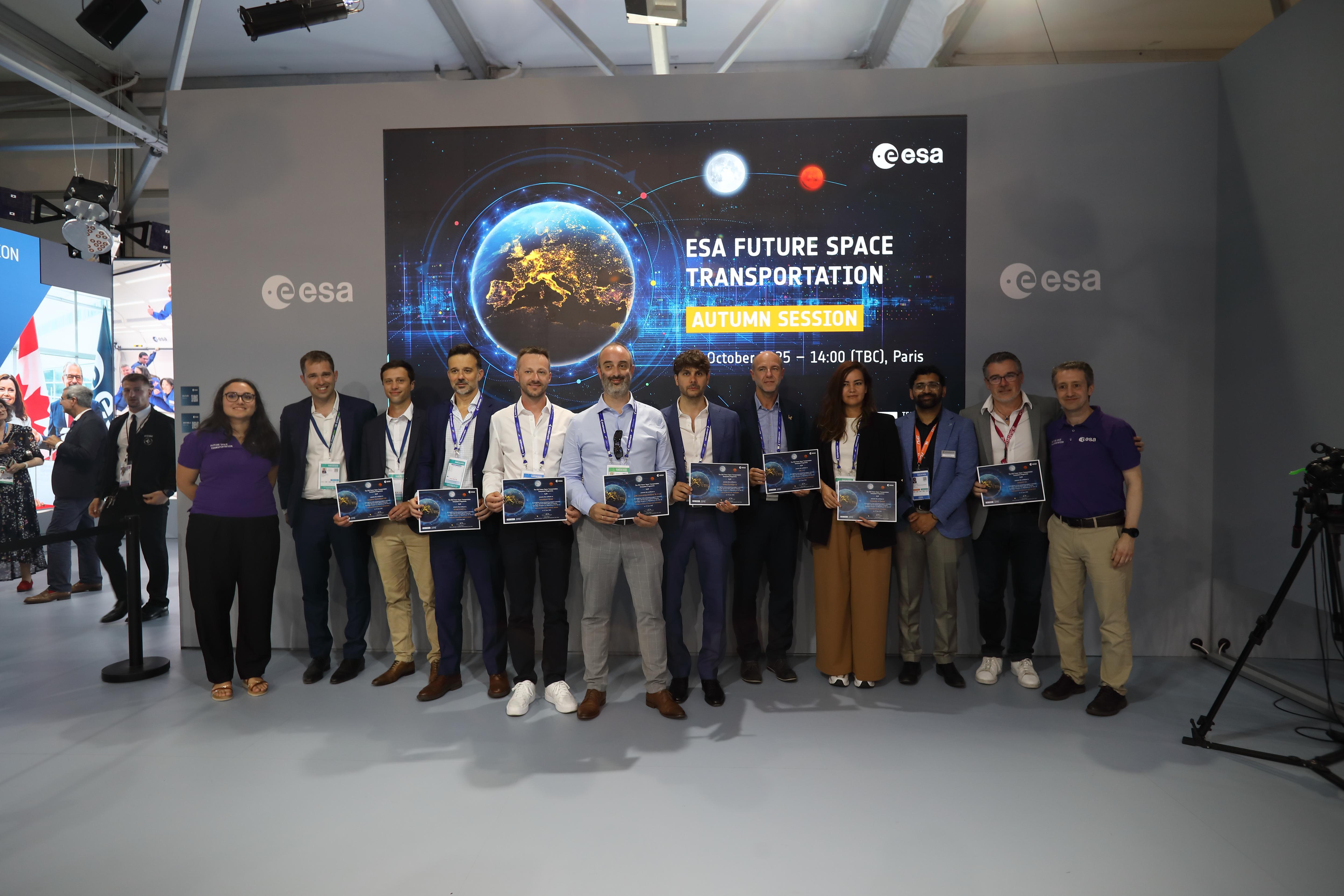The European Space Agency’s third session of the In-Space Transportation Club united nearly 300 participants from national space agencies and industry as well as research and academic institutes to discuss in-orbit refilling, a critical capability for in-space transportation that has the potential to reduce costs, extend spacecraft lifetimes, and enable long-term operations in space.
The star of the session was Odyssey: ESA’s planned orbital propellant depot, which will be at the heart of a sustainable in-space transportation ecosystem. ESA experts outlined the key technologies needed for Odyssey, gathered input from industry and discussed the importance of and path to commercialisation.
Technical Challenges and Solutions
In-orbit refilling capabilities are essential for the future orbital capabilities. An increasing amount of in-space transportation vehicles are already flying or are under development. “They form the backbone of in-space transportation”, said Yann Tincelin, In-Space Proof-of-Concepts (InSPoC) Programme Manager, “but they’re expendable. They lack the ability to be refilled. That’s what we intend to tackle”.
In-orbit refilling is expected to transform space operations, allowing spacecraft to replenish propellant rather than relying on pre-launch fuel loads. The session focused on the technical challenges, market opportunities and next steps in developing refilling technologies, which are being advanced in the preparatory phases of ESA’s InSPoC-1 and InSPoC-2 initiatives.
The session addressed the core technical hurdles, which include:
- Autonomous docking and fluid transfer to allow safe and efficient refilling
- Thermal management to prevent propellant boil-off and loss
- Interoperable interfaces to ensure compatibility across different spacecraft and operators
ESA emphasised that these technologies will not only enable spacecraft to refill in orbit but will also lay the groundwork for future refilling infrastructure, including Odyssey.
Building an Ecosystem – and a Market
Beyond technical developments, ESA stressed the importance of commercialisation in developing the orbital ecosystem.
“Odyssey must be designed to be commercially sustainable from the start”, emphasised Philip Thomas, head of the ScaleUp Programme Division within ESA’s Commercialisation, Industry and Competitiveness Directorate. “We need to start thinking about commercialisation from the very beginning. We are designing a solution for a market that doesn’t exist yet and should carry out commercial de-risking in tandem with technical de-risking.”
The Club explored market potential for refilling services and the roles different industry players could take, including:
- Customers who will need refilling for their transportation systems and satellites
- Operators managing refilling stations and propellant tankers
- Launch providers who would transport propellant to orbit
- Space logistics suppliers developing docking systems, fluid transfer solutions, and cryogenic storage technologies
To support a commercially-viable ecosystem, ESA is working with industry to identify in-orbit refilling use cases. These include supporting in-orbit servicers with extending the operational life of satellites, supporting space tugs for last-mile payload delivery, refilling launcher upper stages, and enabling sustained operations in lunar orbit. Understanding these applications will help shape Odyssey’s technical design and business model.
Live polling during the session provided insights into industry’s critical technological needs and concerns, as well as how they see themselves within the in-space transportation ecosystem and market. Many companies showed an interest in taking part, whether as prime contractors, technology suppliers, or service providers. ESA also provided participants with the opportunity to share their concerns and anticipated roadblocks when developing technology for an in-orbit transportation ecosystem.
ESA is now using this industry feedback to refine its roadmap, ensuring that future refilling capabilities align with the needs of technology for the ecosystem.
Next Steps for Industry Collaboration
During the session, ESA outlined upcoming participation opportunities to develop the in-space transportation ecosystem:
- InSPoC-1 on in-orbit rendezvous, docking & non-cryogenic refilling: the consolidation phase is being procured through an ongoing ITT.
- InSPoC-2 on in-orbit cryogenic propellant storage & refilling: during the ongoing preparation phases, ESA is seeking input from prospective customers on in-orbit refilling use cases and needs. This feedback will help shape system requirements.
- Odyssey, the orbital propellant depot: the preparation phase will begin in Q2 2025, starting with a call for ideas on OSIP. An open competition Invitation to Tender (ITT) for parallel contracts will follow on esa-star.
- InSPoC-3 on on-board & shared intelligence: the preparation phase will begin in Q1 2026.
- InSPoC-4 on containerisation & advanced in-space logistics: the ideation phase will be procured in Q2/Q3 2025, beginning with a call for ideas on OSIP. An open competition Invitation to Tender (ITT) for parallel contracts will follow on esa-star.
ESA also encouraged companies to join dedicated working groups, including:
-
- The Working Group on In-Orbit Docking & Refilling, which focuses on spacecraft connection and refilling techniques
- Convergence Working Committees, which aim to align docking & refilling infrastructures
Jerome Breteau, Head of Future Space Transportation preparation at ESA, highlighted the value of the Club in shaping Europe’s future in-space transportation sector. “The Club has and will play a crucial role for the future of space transportation at ESA and for Europe”.
ESA’s In-Space Transportation Club will continue providing a platform for industry collaboration, offering updates on technical progress, market opportunities, and ways for companies to contribute to the future orbital market.
“This is not science fiction”, concluded Breteau. “We are working on it now”.
Shape the future space transportation with ESA.
ESA Space Transportation website








